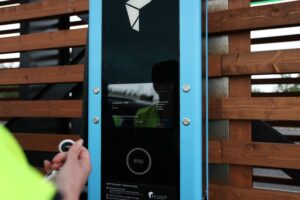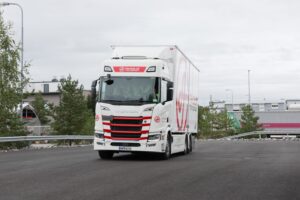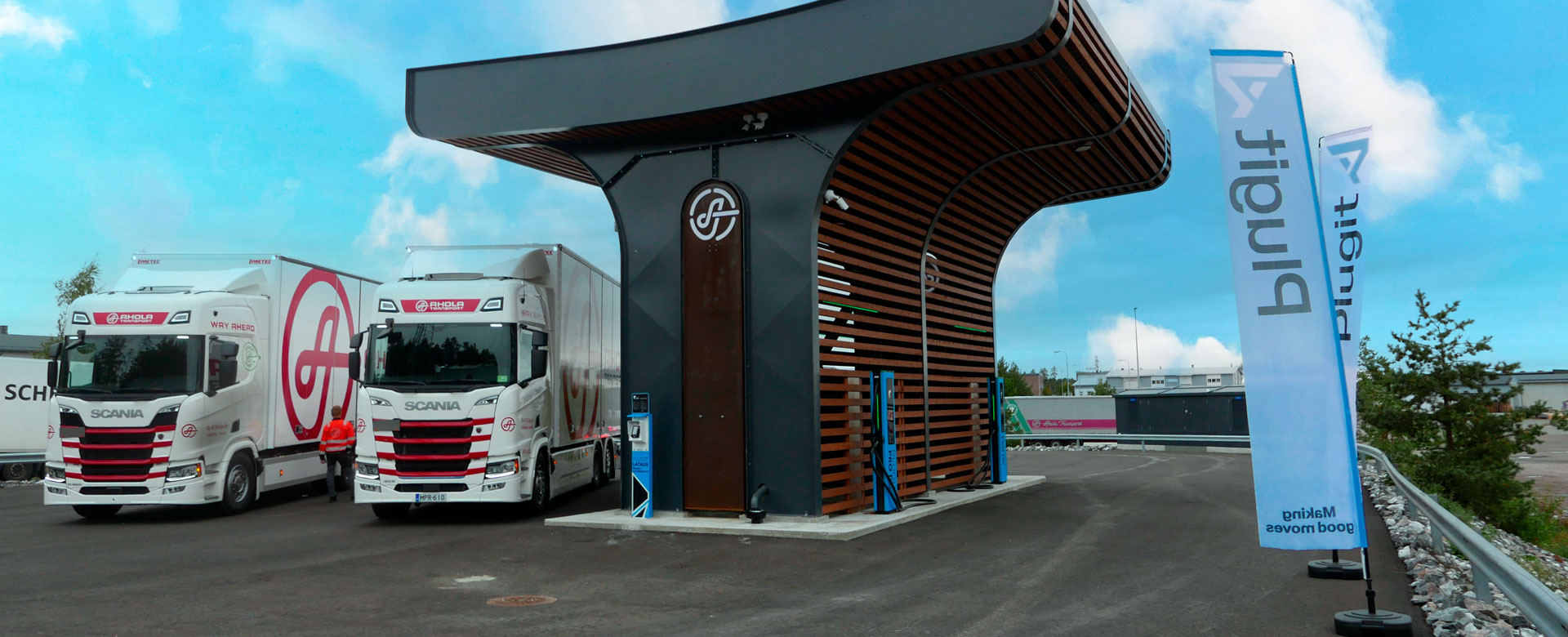This article is originally written by Ahola Transportation Ltd.
New Naantali charging station to support green transition
The opening of Ahola’s new charging station was celebrated in Luolala, Naantali, on Friday, September 13th, 2024. The public charging station is located near the harbour and is a part of Ahola’s large-scale mission to reduce emissions and support the implementation of electric vehicles for heavy-duty transport.
The opening of the station was celebrated with about 70 guests, including people from Ahola and Plugit, who had been closely involved in the construction project, customers of Ahola, as well as representatives of Traficom and other affiliate groups.


Aiming for green transition and reduction of emissions
The new Naantali charging station is designed to support traffic electrification. The station has four charging points that can be used to simultaneously charge either four passenger cars or two heavy duty vehicles. The maximum power output of the charging points is 720 kilowatts, which means that the car battery can be fully charged in 20 to 30 minutes, depending on the charging power of the vehicle.

The honour of opening the event by turning the symbolic ‘Open’ sign was given to Laura Leppänen, Mayor of Naantali. The guests were also given a presentation of the background of the project.

– The charging station is a part of a longer journey to reduce transport emissions. The operative work began years ago, and now is the time to pilot new forms of energy, explains Jimmy Ahola, Marketing and Communications Manager of Ahola Group.
Sustainable development has also been considered in the energy sources of the charging station: most of the energy used in the charging station is produced with Ahola’s own solar panels and batteries, and supplemented with wind power.
The guests were also able to experience what it feels like to ride in a full-electric truck, which turned out to be very popular.

– The full-electric truck is considerably more quiet compared to the traditional fuel-operated vehicle. The ride is also more smooth. We have received a lot of positive feedback from our drivers.
The charging station is strategically located near the harbour that sees a daily freight traffic to Sweden. Another Ahola charging station is located in Nykvarn, on the west coast of the Gulf of Bothnia.
– We hope that the passengers will also discover our new charging station. For example, Finnlines has recently increased their passenger capacity for the traffic between Finland and Sweden. Visiting the charging station when arriving to Finland or leaving for Sweden will be convenient, says Sanna Tamminen, Content Specialist of Ahola Group.
Sustainable development has also been considered in the energy sources of the charging station: most of the energy used in the charging station is produced with Ahola’s own solar panels and batteries, and supplemented with wind power.
Sustainable operations guaranteed by affiliates and technology
The Naantali charging station was carried out in cooperation with Ahola affiliates, with Plugit as a key partner in supplying the charging technology. The use of the electric equipment requires a close cooperation with both customers and technology suppliers.
The green transition is implemented in close cooperation with other operators, and the Naantali charging stations serves as an excellent example of this. The opening celebration was filled with positive expectations of a future, where an increasing number of transports can be executed with electric and other sustainable solutions.
* The charging station is a part of a larger ACE project.
The section of the ACE project focusing on the emissions reduction of heavy duty transport is part of a larger Accelerating Climate Efforts (ACE) project funded by the Finnish Environment Institute that is further funded by the Life programme of the European Union.
LIFE22-IPC-FI-ACE LIFE. Partly funded by the European Union. However, the presented views and opinions are only a reflection of the writers, and might not represent the views of the European Union or CINEA. The European Union or the granting authority cannot be held responsible of the views.



